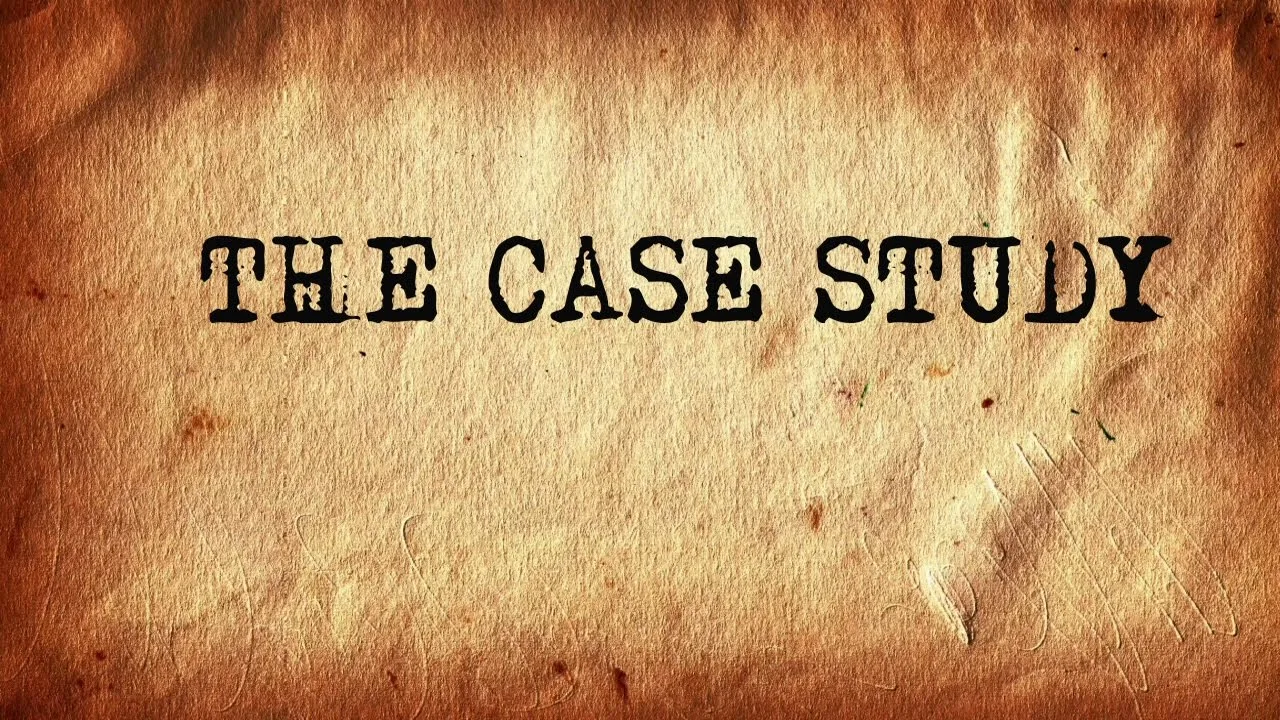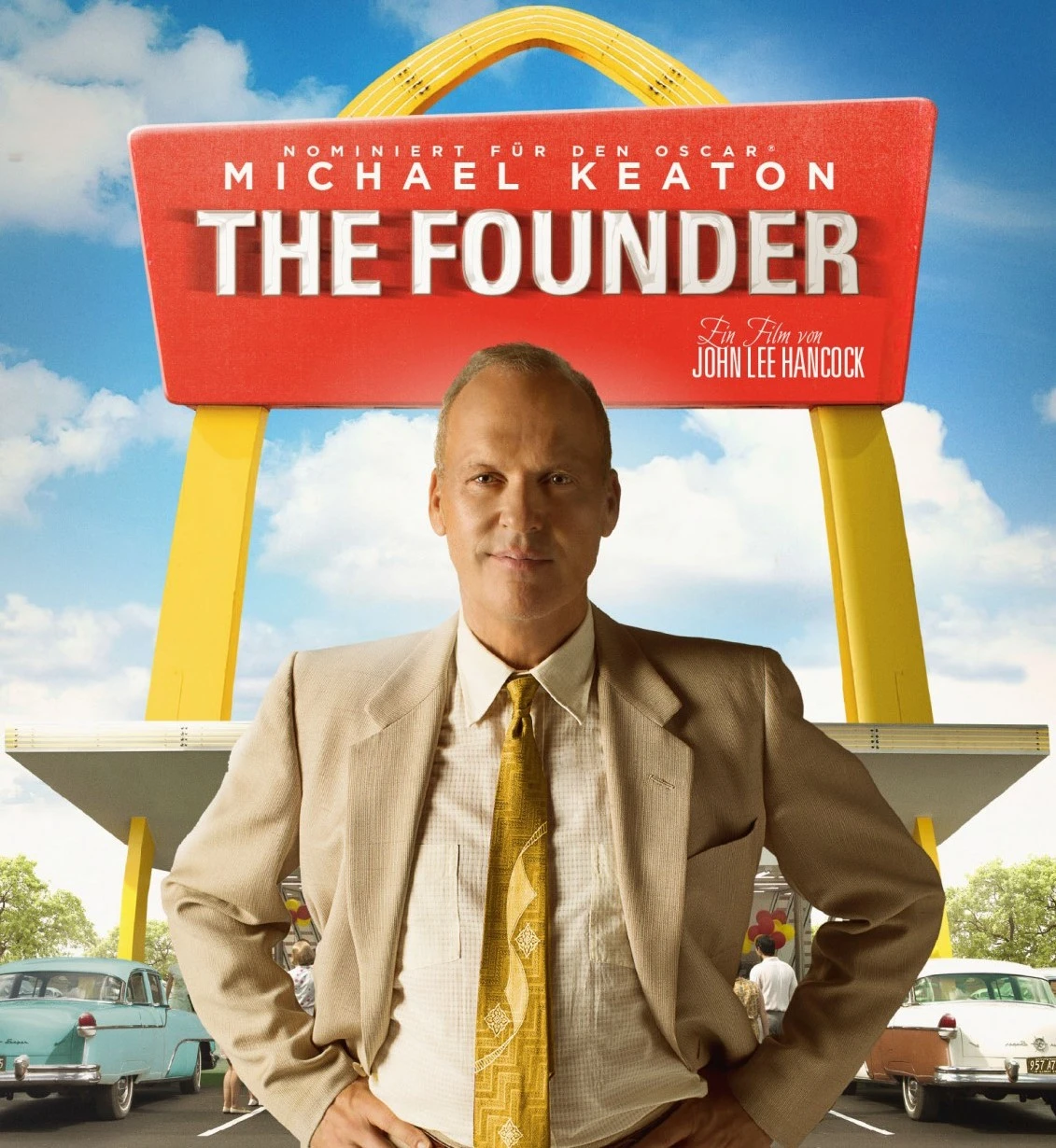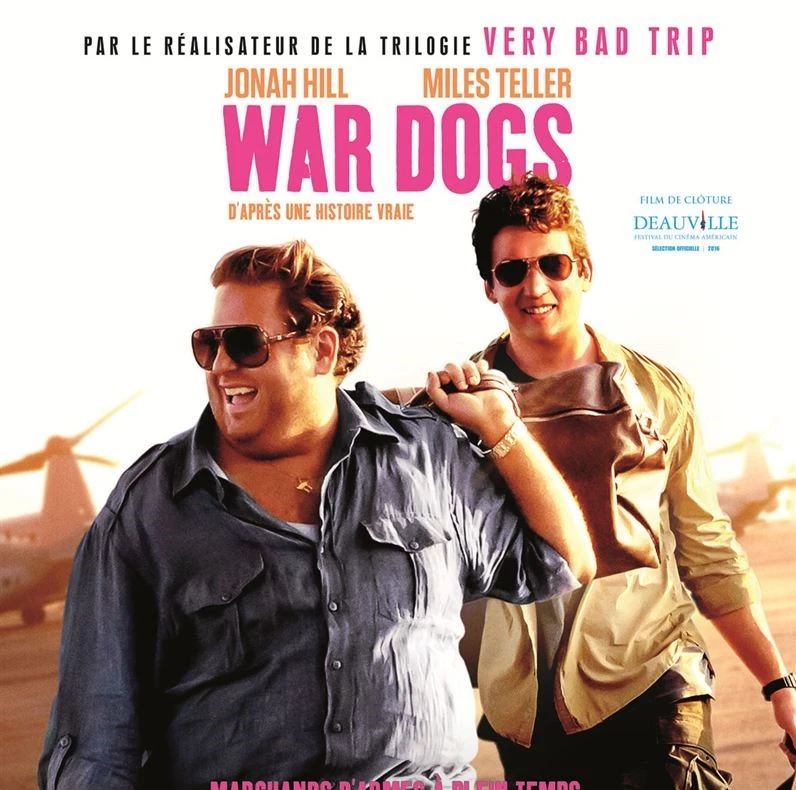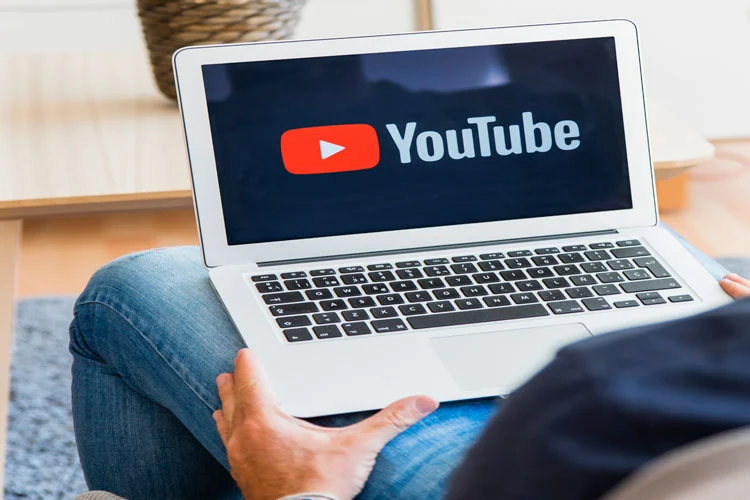Building a Winning SME through Effective Training: Practical Case Studies
Explore real-world case studies demonstrating the transformative impact of strategic training on small and medium enterprises(SMEs). Learn actionable insights and success stories to empower your business growth today.
The Significance of Learning and Development Case Studies for Entrepreneurs
Understanding the importance of learning and development case studies is essential for entrepreneurs aiming to thrive in a competitive landscape. These case studies offer practical insights and proven strategies from real-world business scenarios, enabling entrepreneurs to learn from the successes and failures of others. By analysing these detailed examples, entrepreneurs can identify best practices, innovative approaches, and effective solutions to common challenges. This knowledge not only enhances strategic decision-making but also fosters continuous improvement and adaptability. Additionally, case studies provide inspiration and motivation, showcasing how businesses have overcome obstacles and achieved significant growth. Embracing learning and development through case studies equips entrepreneurs with the tools and confidence needed to drive their ventures forward, ensuring long-term success and sustainability.
Learning and development case studies

Written by: Malose Makgeta
MBA with 20+ years experience in SME development and material. LinkedIn Profile
Learning and Development - Entrepreneurship Lessons from Movies The Founder, War Dogs and Moneyball
- The Founder (McDonald's): The first restaurant opened by the McDonald brothers was not initially successful, leading them to redesign it into what we now recognise as McDonald's. Ray Kroc, who joined later, hadn't perfected the initial business model, nor did he have a detailed business plan. Both the McDonald brothers and Ray faced near failure because they lacked a business plan. Fortunately, they had the resources to delve deep into the business without one. If you have the resources, you can start without a business plan; otherwise, a business plan is critical.
- War Dogs (AEY): War Dogs (AEY) functioned as a dynamic learning organisation, actively acquiring the skills necessary to successfully bid for government contracts. The onboarding process for new recruits involved comprehensive training sessions focused on the intricacies of contract searching and the establishment of productive relationships with suppliers. Efraim, being a seasoned expert in the realm of arms dealing, assumed the role of an instructor, imparting his extensive knowledge to both David and other employees. Under his guidance, the team gained invaluable insights into the nuances of the industry, fostering a culture of continuous learning within the organisation.
- Moneyball (Oakland A's): The Oakland Athletics, under the leadership of Billy Beane, epitomize the concept of a learning organisation in the realm of professional sports. Beane revolutionised baseball management by embracing data-driven decision-making, famously depicted in Michael Lewis's book "Moneyball." The A's, facing financial constraints compared to wealthier teams, leveraged advanced statistical analysis to identify undervalued players and inefficiencies in the player market. This analytical approach demonstrated a commitment to continuous learning and adaptation, challenging traditional scouting methods. The organisation's willingness to question conventional wisdom and integrate new insights into their strategy reflects the key attributes of a learning organisation. By prioritising innovation, data-driven insights, and adaptability, the A's, led by Beane, have not only transformed their own fortunes but have also influenced the broader landscape of professional sports management.
- Explore further insights on business plan development lessons derived from our case study movies: The Founder, War Dogs and Moneyball by clicking here.
CONTEXT
Learning and development (L&D) is a function within an organisation that is in charge of empowering employees growth as well as developing their knowledge, skills, and capabilities in order to drive better business performance. The term learning and development refers to any professional development provided by a business to its employees. This skills programme provides a platform and tools for entrepreneurs and business managers to conduct skills audits, identify skill gaps, and develop fundable training plans.
Learning and development case studies lessons from case studies:
Lessons from The Founder - McDonalds

Movie Description
The Founder is one amazing movie and is a must watch for every entrepreneur. It not only gives you life lessons and but also few path breaking business lessons. The Founder is story of Ray Crock. How a 52-year-old sales man turned two brothers (McDonald Brothers) small eatery into the world’s biggest restaurant business. McDonald brothers had invented the speedy system a process to deliver food in seconds but couldn’t develop business beyond their one restaurant. This is Ray Crock comes re-imagines the whole fast food business and created the McDonald Corporation we see today.
Expected Outcomes
The Founder is jam-packed with practical business advice. It pulls back the curtain to reveal the secrets of Ray Krocs transformation of McDonalds into one of the worlds largest fast food restaurants. Entrepreneurs and business owners will discover: “Nothing in this world can take the place of persistence. Talent wont; nothing is more common than unsuccessful men with talent. Genius wont; unrewarded genius is practically a cliché. Education wont; the world is full of educated fools. The purpose of this case study is to provide a practical case study on how to build a business in the manufacturing sector—that is, a business that takes raw materials and adds value to them to produce a product.
Rational
Ray Kroc, a 52-year-old over-the-hill salesman struggling to sell multimixers, turned two brothers innovative fast food eatery, McDonalds, into the worlds largest restaurant business through a combination of ambition, persistence, and ruthlessness. If you are a small business owner looking to learn about scaling, franchising, and brand building, McDonalds is the one business to look to as a reference, as they have done this incredibly well. They are a true American business success story and icon. The story of how McDonalds came to be is told in a new film, The Founder, and we learn the true story of Ray Kroc, the traveling salesman who is credited with making McDonalds what it is today, and its original founders, Richard and Maurice McDonald.
Key Lesson
None
Click here and draft your business plan in minutes
To request tailored accredited training and enterprise development services, contact us at businessplan@superdealmaker.com.
Get List for material Opportunities in Minutes, Click Here
To request tailored investment banking services, contact us at businessplan@superdealmaker.com.
Training and Learning Development Lessons from "The Founder"
-
Lesson: Vision and Persistence
- Reference: Ray Kroc, the protagonist, demonstrates unwavering persistence and a clear vision for the growth of McDonald's.
- Example: Despite facing numerous setbacks, Kroc persists in pursuing his goals, continually pushing forward and adapting his strategies.
-
Lesson: Adaptability to Market Changes
- Reference: Kroc recognises the need to adapt to changing market dynamics and consumer preferences.
- Example: He constantly seeks innovative solutions, such as the implementation of the Speedee Service System, to cater to the evolving needs of customers.
-
Lesson: Learning from Failures
- Reference: Kroc faces numerous failures and setbacks throughout his journey.
- Example: Rather than being discouraged, he views these failures as opportunities to learn, adjust his approach, and improve his future decisions.
-
Lesson: Customer-Centric Approach
- Reference: Kroc emphasises the importance of delivering consistent and high-quality customer experiences.
- Example: He understands the significance of customer satisfaction and strives to create a standardised system that ensures exceptional service and product quality.
-
Lesson: Effective Leadership and Delegation
- Reference: Kroc develops a franchising system, allowing him to delegate responsibilities and expand the reach of McDonald's.
- Example: He establishes guidelines and procedures to maintain consistency across all locations, demonstrating effective leadership and delegation skills.
-
Lesson: Continuous Improvement and Innovation
- Reference: Kroc constantly seeks ways to improve operations and introduces innovative ideas.
- Example: He collaborates with suppliers, architects, and franchisees to enhance processes, implement new technologies, and stay ahead of competitors.
-
Lesson: Ethical Considerations in Business
- Reference: Kroc faces ethical dilemmas and conflicts, particularly in his dealings with the McDonald brothers.
- Example: He learns the importance of honesty, transparency, and fair business practices, ultimately leading to the resolution of ethical challenges.
-
Lesson: Strategic Partnerships
- Reference: Kroc forges strategic partnerships to fuel the growth of McDonald's.
- Example: He collaborates with likeminded individuals, such as Harry Sonneborn, to secure financing and expand the company's real estate portfolio.
Ray required motivation. When his wife stood up for him, it was a very touching moment. It gave him a boost in his "sails," as you can tell. She was a pillar of strength for him at times. He was constantly innovating. When he was told there was no one way to ask the question, he devised another. Ray was always on the lookout for an edge. He liked to associate with the right people. A young man in one of Ray's first McDonald's rose from flipping burgers to becoming a senior executive in the company. Ray stopped going to fine dining establishments and instead went to VFW halls and other public places to find the right people to run a McDonald's franchise.
The brothers were fundamentally conservative, focused on how the business could provide them with a comfortable middle-class life and a way out of the poverty that had plagued their youth.
Training and development
Kroc established a training program, later known as Hamburger University, at a new McDonald's restaurant in Elk Grove Village, Illinois, in 1961. There, franchisees were trained on how to run a successful McDonald's restaurant. Hamburger U used a nearby Addison, Illinois research and development laboratory to create new cooking, freesing, storing, and serving methods. Over 275,000 franchisees, managers, and employees have graduated from the programmeto date.
Focus on Your Core Competency
"Another judgement I made early in the game and enforced through the years would be no pay telephones, no juke boxes, no vending machines of any kind in McDonalds restaurants. Many times operators have been tempted by the side income some of these machines offer, and they have questioned my decision. But I've stood firm. All of those things create unproductive traffic in a store and encourage loitering that can disrupt your customers."
The business is as good as its employees are
Ray said "I learned that you could influence people with a smile and enthusiasm and sell them a sundae when what they'd come for was a cup of coffee." "No self-respecting pitcher throws the same way to every batter, and no self-respecting salesman makes the same pitch to every client." "Too many salesman, I found would make a good presentation and convince the client, but they should have stopped talking. If I ever noticed my prospect starting to fidget, glancing at his watch or looking out the window or shuffling papers on his desk, I would stop talking and ask for his order."
When a company begins to expand and more people join, the organisation's success is no longer solely dependent on the leaders, but on all employees. Simply put, a company is only as good as its worst employees.
Your employees are also your company's representatives, and they work and communicate on your behalf every day. If they make a mistake, your customers will blame your company, not them. When they do something good that makes customers happy, the same rule applies. Kroc realised that if he was going to build a large company that would operate all over the world, he would need good people to help him because he couldn't do it alone.
Seek expert guidance and new perspectives.
Ray Kroc struggled to make ends meet on the 1.5% commission he received from the McDonald brothers at one point. When he removed the constraints imposed by the contract terms, things began to improve for him. This was after meeting a financial expert, Harry Sonneborn, who convinced him that he was in the real estate business, not just the fast food business. He could purchase the property on which his franchisees operate. The advice also assisted him in gaining more control over the franchisees he chose. He could evict them if they did not meet McDonald's restaurant standards because he owned the land. There are some ideas that may never occur to you unless you receive expert advice or new perspectives from people you trust.
Lessons from War Dogs - AEY

Movie Description
War Dogs is based on one of those true stories that no one would actually believe if it were written as fiction. In the mid-’00s, two kids named Efraim Diveroli and David Packouz managed to secure a $300 million contract with the United States government to supply allied forces in Afghanistan with arms and ammunition. They then embarked on a globetrotting misadventure that saw them dealing with shady crooks and corrupt politicians and dangerous soldiers in the name of making a fortune. Most astonishingly, both men were twenty something stoners with no experience handling anything of this size or scope. As much as the film may diverge from the truth for the sake of cinematic drama, the core story remains jaw-droopingly true.
Expected Outcomes
There are several important lessons that any aspiring new entrepreneur can learn from Hollywoods portrayal of business in these business movies. Two friends embark on that journey, and they do what any excited real entrepreneur or business manager would do: they hustle, work like dogs, read and study all night, and have a do-whatever-it-takes attitude. If a deal is about to fall apart, they hustle even harder and manage to keep it together. The purpose of the case study is to provide a practical case study on how to build a business in the facilitated network sector, which makes money by allowing people to exchange information, products, and services.
Rational
Entrepreneurs are constantly learning on the job, from their peers to their idols, and, most importantly, from their own mistakes—the road to owning your own business is littered with lessons learned. However, learning some of these lessons before embarking on your own journey only makes the process easier. i.e. Cutting corners can be an expensive proposition - Finding the best deals can be wise but make sure that you consider long-term costs and the time that you might have to invest to fix problems.
Key Lesson
None
Training and Learning Development Lessons from "War Dogs"
-
Lesson: Adaptability and Self-Learning
- Reference: David and Efraim initially had limited knowledge about the arms industry but took it upon themselves to research and learn through self-study.
- Example: Despite their lack of experience, they actively sought information, read manuals, and familiarised themselves with the industry.
-
Lesson: Networking and Learning from Experts
- Reference: David and Efraim learned valuable insights and negotiation skills by collaborating and networking with experienced arms dealers.
- Example: They approached established players in the industry and sought guidance, allowing them to gain knowledge and expertise.
-
Lesson: The Power of Hands-On Experience
- Reference: David and Efraim learned critical aspects of their trade through practical experience, such as handling transactions and navigating international arms deals.
- Example: They learned about the complexities of the business by actively engaging in negotiations and making real-world decisions.
-
Lesson: Resilience in the Face of Challenges
- Reference: David and Efraim encountered obstacles such as limited resources and legal barriers, but they persevered and found alternative solutions.
- Example: Despite setbacks, they adapted their strategies, utilised available resources, and found creative ways to overcome challenges.
-
Lesson: Ethical Considerations and Accountability
- Reference: Throughout the movie, David and Efraim faced ethical dilemmas and had to navigate the legal ramifications of their actions.
- Example: They made efforts to ensure compliance with regulations, sought legal advice when necessary, and recognised the importance of accountability in their business practices.
-
Lesson: Learning from Mistakes and Continuous Improvement
- Reference: David and Efraim encountered failures and made errors along the way, but they used these experiences as opportunities for growth and learning.
- Example: They acknowledged their mistakes, reflected on their actions, and adjusted their strategies to improve their future decision-making processes.
-
Lesson: Trust and Collaboration
- Reference: Building and maintaining trust was crucial in their business relationships, both with clients and partners.
- Example: They recognised the importance of transparency, open communication, and honoring commitments to establish and nurture trust-based connections.
-
Lesson: Balancing Risk and Reward
- Reference: David and Efraim understood the risks associated with their business but also recognised the potential for substantial financial gains.
Entrepreneur Profile
Diveroli loved to boast about his wealth, and rumors circulated among stoners about the huge sums he was making, especially when compared to their crappy part-time jobs. Diveroli drove Packouz to a party at a local rabbi's house one evening, enticing him with the promise of free booze and pretty girls. David and Efraim land a contract to provide several thousand Beretta pistols to the Iraqi Police in Baghdad,. He told Packouz about how he got the contracts, how much money he was making, and how much more there was to be made.
Packouz was intrigued. He was running his own online business, purchasing sheets from textile companies in Pakistan and reselling them to distributors who supplied nursing homes in Miami. The sums he made were small — a thousand or two at a time — but the experience made him hungry for more.
Packouz began working with Diveroli in November 2005. His job title was account executive. He would be paid entirely in commission. The pair worked out of a one-bedroom apartment Diveroli had rented in Miami Beach at the time, sitting opposite each other at a desk in the living room, surrounded by stacks of federal contracts and a mountain of marijuana. They quickly established a daily routine: wake up, bake, and start wheeling and dealing.
Packouz was about to receive a once-in-a-lifetime education. He watched as Diveroli was awarded a State Department contract to supply the Colombian army with high-quality FN Herstal machine guns. It was a lucrative deal, but Diveroli was never satisfied — he was always looking for more. So he persuaded the State Department to let him substitute Korean knockoffs for the high-end Herstals — a switch that instantly doubled his earnings. Diveroli did the same thing with a large helmet order for the Iraqi army, pressuring the Pentagon to accept lower-quality Chinese-made helmets after winning the contract. After all, the military was not purchasing weapons and helmets for American soldiers. The unfortunate end-users were foreigners, and who would go the extra mile for them?
Continuous learning will help you become an expert in your field. The only way to win in the long run is to stay on top of it and master it. In the film,[28:16] is a good example of the guys failing to pay attention to recent legislative changes. As a result, they devise a last-minute backup plan to ship the goods, which fails. In your market or industry, you should always be learning something new, as it will inevitably lead to advancement.
Unlike their film counterparts, however, Diveroli and Packouz’s real-life journey wasn’t made up of dramatic chase scenes and hilarious one-liners. It was only thanks to years of tireless effort that these infamous school friends managed to land the deal that would change their lives forever.
Older people trust people who have spent a significant amount of time in the same chair at the same company. People are always suspicious of successful young people. The two guys in the movie had to constantly fight the stereotype that they were young and knew nothing. At the end of the day, they handed over operational guns and ammunition to the Afghan army. They deserved some recognition, but they never got it. Being a young entrepreneur has its benefits, but it can also cause you to be viewed negatively by some potential business partners and media outlets.
Older people (in corporations or the government) trust people who have spent a lot of time in the same chair at the same company. People are always suspicious of successful young people. Old people who worked hard to achieve success always dislike and distrust young successful people. Just because someone is young doesn't mean they aren't more driven than you and can achieve greater success in business and in their careers than you did.
The two guys in this book and movie were constantly fighting against that perception. They had to constantly fight the stereotype that they were inexperienced. By the end of the day, they had delivered working guns and ammunition to the Afghan army. By doing so, they played an important role in America's war efforts in Afghanistan. They deserved recognition, but they never got it.
To demonstrate that you are not immature or unqualified to manage your business, you must take steps to distinguish yourself from your age and showcase your skills.
raining and Learning Development Lessons from "Moneyball"
-
Lesson: Embracing Data-Driven Decision Making
- Reference: In the movie, Billy Beane revolutionises the Oakland Athletics' approach to baseball by relying on data and statistics to make player recruitment and game strategy decisions.
- Example: Beane and his team analyze player performance metrics, such as on-base percentage and slugging percentage, to identify undervalued players who can contribute to the team's success.
-
Lesson: Challenging Traditional Assumptions and Biases
- Reference: Beane challenges the conventional wisdom and biases prevalent in the baseball industry, such as scouts' subjective evaluations and traditional player selection methods.
- Example: He questions the reliance on outdated scouting techniques and instead focuses on objective player data to make more informed decisions.
-
Lesson: Building a Diverse and Complementary Team
- Reference: Beane assembles a team of individuals with diverse skills and backgrounds, including economists and analysts, to support his data-driven approach.
- Example: He recognises the importance of having different perspectives and expertise to enhance decision-making and overall team performance.
-
Lesson: Resilience in the Face of Resistance
- Reference: Beane faces resistance and skepticism from traditionalists within the baseball community who are resistant to change.
- Example: Despite the opposition, Beane remains committed to his data-driven approach and perseveres in implementing his strategies.
-
Lesson: Continuous Learning and Adaptation
- Reference: Beane and his team constantly monitor and evaluate their strategies, making adjustments based on ongoing learning and analysis.
- Example: They adapt their approach as new data and insights emerge, allowing them to optimize player performance and team success.
-
Lesson: Collaboration and Communication
- Reference: Beane collaborates with his team, including the coaching staff, scouts, and analysts, to align everyone towards a common goal.
- Example: Effective communication and teamwork are crucial in implementing the data-driven approach and ensuring everyone is on the same page.
-
Lesson: Rethinking Talent Evaluation
- Reference: Beane challenges traditional methods of evaluating player talent and focuses on undervalued metrics to identify high-performing individuals.
- Example: He looks beyond superficial characteristics and focuses on specific skills and statistical indicators to determine a player's potential.
Time and talent are precious resources. Leaders who adopt an outcome-based approach ensure that neither of these is wasted. This approach focuses people and teams on a concrete result, not the process required to achieve it. Leaders define outcomes and, along with managers, set parameters and guidelines. Employees, then, have a high degree of autonomy to use their own unique talents to reach goals their own way.
People in charge of organisations frequently think in terms of finding talent. Our goal should not be to find talent; rather, our goal should be to achieve our strategic objectives, which require capability. Capability can take many forms, but all too often the answer is to go to market and hire a permanent employee. What if we only need a portion of what that person has to offer in terms of capability, or perhaps all of their capability but only some of the time? Are we not potentially underutilising that person if we retain them indefinitely? We can be far more targeted and efficient in how we source those capabilities if we have a clearer understanding of what the strategically critical capabilities required are.
It is critical to have the right people on your bus. However, in order to do so, you must first determine exactly what needs to be done and then hire people who can do it. Don't get caught up in fancy titles, big salaries, stock options, or what appears to be good on the outside. To be successful, you must be in the business of filling gaps and purchasing outcomes. If you need more customers and sales, hire someone you know can and is motivated to do so. It makes no difference what you call him; what matters is that he can deliver the results you require to survive and thrive in your business.
Moneyball is an intriguing example of Adaptive Leadership style. Billy Beane (played by Brad Pitt) confronted the system head on. He identified the issue as an adaptive challenge rather than a simple technical one. In his words, we will either adapt or die. This film inspires us to solve unique problems in creative, intense, and engaging ways.
- Hiring and Developing Talent - Leaders excel at recognising and developing talent. Leaders must be able to identify and hire the right people.
- Ask the Right Questions: Leaders can get to the heart of the matter by asking the right questions. Problem definition (by asking the right questions) is an important business skill.
- Challenge the Status Quo: Leaders push the organisation out of its comfort zone by challenging old mindsets. It necessitates difficult, open discussions with those who do not see or agree with the strategy.
- Connect with the Team: Leaders are compassionate. Across their team, they connect as individuals. They hold themselves accountable for team morale and communicate frequently to maintain it, positively pushing their team to achieve more.
- Adapt or Die: The dynamic and evolving business trends require management and human resources functions to be bold, courageous, and innovative in order to add value to their organisations.
- Identify the Right Metrics: It is critical to understand what metrics are truly meaningful for success. Leading and lagging indicators. Leading indicators forecast where we will end up.
- Always be willing to learn and improve: Billy learned new ways to select players from Peter, while Peter learned how to fire players from Billy. Players also took Billy and Peter's game analysis feedback seriously and understood their areas for improvement.
- Billy's secret was excellent management and adaptable leadership. Baseball has never been the same since he used evidence-based, validated statistics to measure the skills that directly mattered to performance. Billy recognised adaptive challenges and bravely attempted to solve them. 'Adaptive leadership is specifically about change that allows for the capacity to thrive in new, challenging, and complex situations.
Be Responsive to Change
Grady Fuson, a scout, confronted Billy Beane. He was upset because Billy was dismissing Grady's intuition and 29 years of experience in favor of an unconventional methodology developed by a college graduate - Peter. Grady was fired after Billy mentioned "Adapt or Die," because he was not prepared to adapt to the new approach required in the circumstances.
Believe that you can change the game
Billy works hard to persuade the team and staff to support his new strategy. He describes the procedure, instructs and motivates players for weeks so they meet or exceed expectations. When scouts reject the team's new recruiting strategy, he fires them. However, Billy's unconventional strategy, which is not taken seriously by baseball critics, ends up working. Billy finds "wasted" talent that is profitable for both the team and the individual players while working with a smaller budget, less risk, and better planning.
Like Billy Beane we aim high: In order to minimize risks, identify opportunities, and maximize gains for investors, planners, and builders, but most importantly for the people who use it or live in it, we want to facilitate a more thorough and precise planning process for architecture.
Always be Ready to Learn & Improve
Billy learned new ways to select players from Peter at the same time Peter learned how to fire players from Billy. Players also took Billy and Peter's game analysis feedback seriously and understood their development areas. When necessary, Billy used a variety of methods to provide feedback. For example, when players were celebrating after a loss, he displayed his rage and made them realize that this is not the proper way to react after a loss. Billy told one of the senior players, David Justice, that he was not paying him for the player he used to be. I'm paying you for the player you are right now.
Oakland's first six weeks of the season were a disaster. Nothing went as planned. Despite harsh criticism from fans, his staff, and the media, Billy Beane stuck to his vision and was rewarded with a record-breaking unbeaten streak. You must be patient when implementing changes in your team. Rome was not built in a day, and your best people may require some time to shine. Evaluate the process on a regular basis to determine what is and is not working. Remove anyone or anything that is significantly reducing the impact of your strategy and jeopardising the success of your team. Surround yourself with great people and team players, and put your faith in them to deliver.
Be patient with employees and create a positive work environment. As a good businessman, one must understand that frequently changing employees will not help him grow his business because he is investing his time and money to train the employee, and if he has to take on a new employee in a short period of time, all of his money and time invested in him will be wasted, and the same process must be repeated when recruiting a new one. So one must be patient with employees while also working to create a great work culture so that employees enjoy coming to work and never consider quitting.
You must understand what you want to achieve and the level you want to reach. If you don't set a goal, you have no destination; without a destination, you have no way of measuring success; and without a way of measuring success, your team has no hope. The best leaders know what they want and establish the parameters for achieving it. Billy Beane's goal was to win a championship with the Oakland A's and build a winning team. Raise the bar and raise your expectations! Does that sound simple? It is. Raising expectations does not mean increasing workload; rather, it means setting higher expectations in order to achieve better results.
Talent acquisition
Traditional approaches to talent acquisition can be outdated. Every day, blogs and forums are created with questions such as;
- How do we win the talent war? What are our rivals doing to attract and retain top talent?
- How can we compete for talent if we cannot afford to pay what others can?
- How can we be certain that the right people are in the right place at the right time?
- Organisations and leaders are, indeed, asking all of the wrong questions. So, what are the appropriate questions?
- So, we could think about asking questions like: What are we trying to accomplish as an organisation?
- What are the most strategically aligned and critical capabilities we need to carry out our strategy?
- In short, conventional wisdom may shift from how do we find talent? How do we find capability?
- How do we find capability?
Learning and Development Case Movie Key Takeaways:
Firstly, strategic alignment is emphasised as a crucial element. Recognising the symbiosis between organisational goals and employee skillsets, businesses are urged to conduct thorough analyses to identify existing and future role requirements. Tailoring learning objectives to these needs ensures a targeted and purposeful approach. The module suggests a diverse range of learning methods, encompassing workshops, online courses, mentorship programs, and on-the-job training, to cater to varied learning styles among employees.
The second focal point revolves around the integration of technology for efficient and engaging learning experiences. Businesses are encouraged to invest in learning management systems (LMS) to streamline content delivery and progress tracking. Furthermore, the adoption of innovative technologies like virtual and augmented reality is highlighted for their potential to provide immersive and effective learning environments. The takeaway emphasises the importance of staying technologically current to enhance the overall effectiveness of learning and development initiatives.
Lastly, a culture of continuous learning emerges as a pivotal aspect for organisational success. Beyond formal training programs, module stresses the value of fostering a collaborative environment where employees actively share knowledge and insights. This cultural shift toward ongoing learning contributes not only to individual skill development but also to enhanced employee satisfaction and retention. The overarching message is clear: businesses that independently prioritize strategic alignment, technological integration, and a culture of continuous learning are poised for sustained success and adaptability in the dynamic landscape of today's workforce.
Join the Conversation: Share Your Thoughts on This Article
- No comments yet.
Add Your Comment Now!



